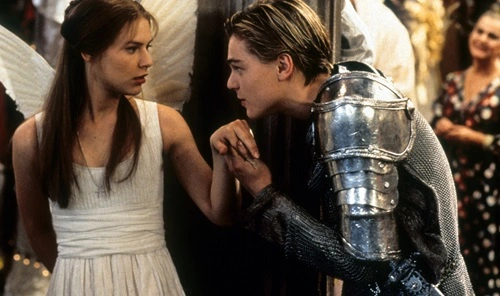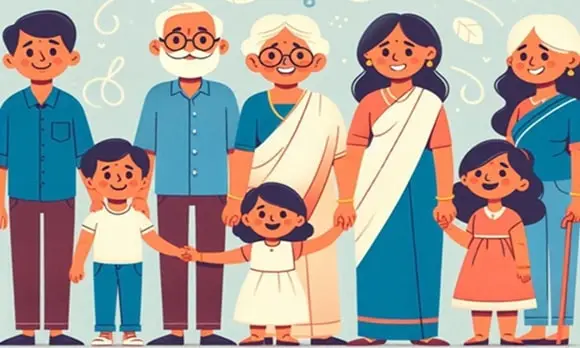Romeo and Juliet is perhaps the most famous love story ever told. Written by William Shakespeare in the late 16th century, this tale of two “star-crossed lovers” from feuding families has captivated audiences for centuries. Its themes of love, fate, family, and tragedy are universal, making Romeo and Juliet one of Shakespeare’s most performed and adapted plays. Here are over 10 fascinating facts about Romeo and Juliet that showcase why this timeless story continues to resonate with audiences worldwide.

1. Inspired by an Older Italian Tale
Shakespeare didn’t create the story of Romeo and Juliet from scratch. The play was inspired by older Italian tales of tragic love, most notably a poem by Arthur Brooke titled The Tragical History of Romeus and Juliet, published in 1562. Brooke’s version was itself based on an Italian novella by Matteo Bandello, and there were other versions circulating throughout Italy and France. Shakespeare’s genius was in transforming these earlier tales into a profound work of art with unforgettable characters and emotional depth.
2. It’s One of Shakespeare’s Shortest Plays
While many of Shakespeare’s plays are lengthy and complex, Romeo and Juliet is relatively short. It’s one of Shakespeare’s shortest plays, with an average runtime of about two hours on stage, fittingly summarized by the prologue’s line, “the two hours’ traffic of our stage.” This concise format keeps the pacing tight, propelling the audience quickly from the joyous beginning of Romeo and Juliet’s romance to its tragic end.
3. Shakespeare Coined New Words in the Play
Like much of Shakespeare’s work, Romeo and Juliet contributed new words and phrases to the English language. Words like “star-crossed” and expressions like “a wild-goose chase” and “parting is such sweet sorrow” are credited to this play. Shakespeare’s inventive use of language helped enrich English and added a poetic, lyrical quality to his writing, which is part of what makes his plays so enduringly popular.
4. The Play Was Controversial in Its Time
Romeo and Juliet was controversial when it was first performed, mainly because of its themes of disobedience and defying parental authority. In Elizabethan society, arranged marriages were common, and young people were expected to obey their parents’ wishes, especially regarding marriage. By portraying Romeo and Juliet as young lovers who defy their families, Shakespeare was challenging societal norms, a theme that would have been both provocative and appealing to his audience.
5. The Setting of Verona Is Iconic, But Shakespeare Never Visited Italy
Shakespeare set Romeo and Juliet in the Italian city of Verona, a romantic choice that gave the story an exotic and passionate backdrop. Despite setting several plays in Italy, there’s no evidence that Shakespeare ever visited the country. Instead, he relied on books, maps, and popular stories to capture the spirit of Italy, giving the play an air of foreign intrigue that would have appealed to Elizabethan audiences.
6. Romeo and Juliet Were Much Younger Than Modern Audiences Imagine
In the play, Juliet is just 13 years old, while Romeo is believed to be a few years older, perhaps 16 or 17. In Shakespeare’s time, marriage at a young age was more common, and girls often married in their teens. Today, the youth of the characters adds a layer of tragedy, emphasizing the impulsive, passionate nature of young love and the devastating consequences of the feud between their families.
7. The Play Contains Several Famous Duals and Deaths
Romeo and Juliet is well-known not only for its love scenes but also for its intense duels and dramatic deaths. The fight scenes between Tybalt, Mercutio, and Romeo are some of the most action-packed in Shakespeare’s works. The tragic deaths of Mercutio and Tybalt, followed by the tragic suicides of Romeo and Juliet, add a high-stakes intensity to the play, keeping audiences emotionally engaged and emphasizing the senselessness of the family feud.
8. A Play Rich in Foreshadowing and Fate
The theme of fate is central to Romeo and Juliet, with the concept of “star-crossed lovers” woven throughout the play. From the very beginning, the prologue reveals that the lovers are doomed. This use of foreshadowing builds a sense of inevitability and fate that haunts the play. Many characters make references to omens, dreams, and misgivings, emphasizing that fate’s hand is guiding the tragic events that unfold.
9. Romeo and Juliet Have Been Played by Iconic Actors
Over the years, Romeo and Juliet has been performed by countless actors, including some of the most famous names in theater and film. Laurence Olivier, Leonard Whiting, Olivia Hussey, Claire Danes, and Leonardo DiCaprio are just a few of the stars who have portrayed the young lovers on screen. Each generation brings new interpretations to the roles, proving that the story’s appeal is timeless and adaptable to various styles and settings.
10. The Balcony Scene Is Not Actually in a Balcony
One of the most famous scenes in Romeo and Juliet is the so-called “balcony scene,” in which Juliet appears on her balcony and speaks to Romeo. Interestingly, the original play does not specify a balcony. The stage direction merely says, “Juliet appears above at a window.” It was later adaptations and interpretations that added the idea of a balcony, creating one of the most iconic images in theater and literature. The balcony scene has become a symbol of romantic love and is one of the most frequently quoted passages from Shakespeare’s work.
11. It’s One of the Most Adapted Plays in History
Romeo and Juliet is one of the most adapted plays in history, with versions in opera, ballet, film, musicals, and more. Some of the most famous adaptations include the 1968 film directed by Franco Zeffirelli, the 1996 film Romeo + Juliet directed by Baz Luhrmann, and the Broadway musical West Side Story, which reimagines the story in 1950s New York. Each adaptation brings new life to the play, making it accessible and relevant to different generations and cultures.
12. Shakespeare’s Play Has Sparked Real-Life Tragedies
The intense themes of Romeo and Juliet have, unfortunately, inspired real-life tragedies. The phenomenon of “copycat suicides” in the wake of tragic love stories like Romeo and Juliet is well-documented, especially among young people who feel a connection to the characters’ plight. This association has led to discussions about the play’s influence on vulnerable audiences and the need for awareness and support for mental health.
13. Romeo and Juliet’s Love Has Symbolic Power in Literature
The names Romeo and Juliet have become synonymous with romantic love. The characters are often referenced in other works of literature, film, and art as symbols of pure, passionate love that transcends obstacles. Even in popular culture today, calling someone a “Romeo” implies they are a romantic or passionate lover, while the term “star-crossed lovers” has become a universal expression for doomed romances.
14. The Ending Almost Didn’t Have to Be So Tragic
Although the story of Romeo and Juliet is tragic, some scholars argue that Shakespeare offers brief moments where things could have gone differently. For instance, if the letter explaining Juliet’s fake death had reached Romeo in time, he would have known she wasn’t truly dead, possibly averting the final tragedy. These missed opportunities add layers of tension and poignancy to the story, as audiences are left wondering what might have been.
15. Verona, Italy, Embraces the Legacy of Romeo and Juliet
The city of Verona celebrates the legacy of Romeo and Juliet as if they were real people. Casa di Giulietta (Juliet’s House) is a popular tourist attraction where visitors can see a balcony inspired by the play and leave letters to Juliet on the walls, seeking advice in love. Although the house wasn’t actually Juliet’s, it’s a romantic tribute that attracts thousands of fans each year, turning the city into a pilgrimage site for lovers of the play.
Romeo and Juliet endures not only because it’s a love story but because it’s a powerful exploration of human emotions, family loyalty, fate, and the choices that define us. The tale of these star-crossed lovers has inspired countless adaptations, brought new words into our language, and given generations a timeless story about the joys and sorrows of love. From the Italian city of Verona to modern movie theaters, Romeo and Juliet continues to captivate audiences, reminding us of the universal themes that connect us all.


